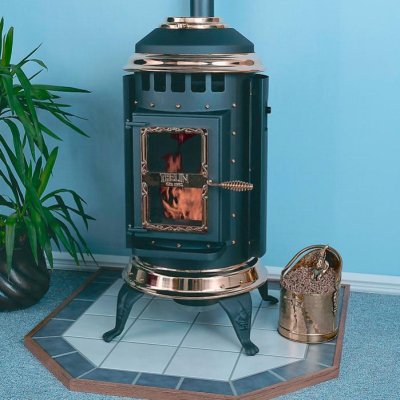aronhk_md
Senior Member
Ok, I'm not sure why with all the hardy year round boaters here there hasn't been more discussion about pellet stoves onboard. Doing a search for "pellet stove" yielded one thread only. I have had one before and loved it...but not on a boat.
Unlike coal and wood, pellets aren't as messy....plus they are self feeding for 12-36 hrs. Storage of fuel might be an issue for some, but others have plenty of upper deck space for winter months. I know I do. And davits to bring it up too.
I know that anything that burns presents a hazard for fire, but that's not really the issue I'd like to discuss....other things do too including fuel for the outboard for a dinghy, propane fueled stoves, BBQ's, electrical items, etc, etc. Pellet stoves don't get as hot on their outer surface as a woodstove. The fire is contained in a small burn pot usually several inches across. The greatest threat I can envision is actually in emptying the ash pan, but that too is just because it is hot...it really never has embers in it. You wait for it to cool.
I have thought that a Thelin Parlour 3000 pellet stove would be ideal. It has a much smaller footprint than a traditional pellet stove at 20x20 inches while 43 inches tall, , is much nicer in appearance (enamel coatings in just about any color),uses a 3" vent pipe and only draws 27 watts (2.25 amps) on 120v. It also has a battery backup of its own....which I wonder if it could be plugged into the house batteries on board for extended reserve and or running while on the hook without gen or inverter.
Its 40,000 BTU on high and capable of heating 2000 sq ft according to the company. I have approx. 400 sq ft above decks, and another 150-200 below decks, but considering the boat has an aluminum hull and is not as well insulated as a house...my guess is on a VERY cold winter day when the temp was in single digits it would be running on high, while on a more temperate winter day I might need a medium setting.
The largest problem I see with this type of heat is circulating it through the whole boat. You don't want the salon at 90 degrees with the staterooms and head at 60. But....air circulating fans could potentially help depending on the layout of your boat. In my case I have tons of space below decks, and I could even add an outlet down there to keep water pipes from freezing and the previous owner already ran a lot of PVC piping down there for A/C and heat.
They can be run with a thermostat, but the circulation had better be good and some thought or trial and error involved regarding placement of said thermostat.
I think it may be less maintenance than a diesel heater and cheaper, cheaper than electric heat alone. They aren't cheap to buy, but what is? Electric heaters are cheap, but I think the stove would pay for itself within 2 seasons.
Any thoughts?
Unlike coal and wood, pellets aren't as messy....plus they are self feeding for 12-36 hrs. Storage of fuel might be an issue for some, but others have plenty of upper deck space for winter months. I know I do. And davits to bring it up too.
I know that anything that burns presents a hazard for fire, but that's not really the issue I'd like to discuss....other things do too including fuel for the outboard for a dinghy, propane fueled stoves, BBQ's, electrical items, etc, etc. Pellet stoves don't get as hot on their outer surface as a woodstove. The fire is contained in a small burn pot usually several inches across. The greatest threat I can envision is actually in emptying the ash pan, but that too is just because it is hot...it really never has embers in it. You wait for it to cool.
I have thought that a Thelin Parlour 3000 pellet stove would be ideal. It has a much smaller footprint than a traditional pellet stove at 20x20 inches while 43 inches tall, , is much nicer in appearance (enamel coatings in just about any color),uses a 3" vent pipe and only draws 27 watts (2.25 amps) on 120v. It also has a battery backup of its own....which I wonder if it could be plugged into the house batteries on board for extended reserve and or running while on the hook without gen or inverter.
Its 40,000 BTU on high and capable of heating 2000 sq ft according to the company. I have approx. 400 sq ft above decks, and another 150-200 below decks, but considering the boat has an aluminum hull and is not as well insulated as a house...my guess is on a VERY cold winter day when the temp was in single digits it would be running on high, while on a more temperate winter day I might need a medium setting.
The largest problem I see with this type of heat is circulating it through the whole boat. You don't want the salon at 90 degrees with the staterooms and head at 60. But....air circulating fans could potentially help depending on the layout of your boat. In my case I have tons of space below decks, and I could even add an outlet down there to keep water pipes from freezing and the previous owner already ran a lot of PVC piping down there for A/C and heat.
They can be run with a thermostat, but the circulation had better be good and some thought or trial and error involved regarding placement of said thermostat.
I think it may be less maintenance than a diesel heater and cheaper, cheaper than electric heat alone. They aren't cheap to buy, but what is? Electric heaters are cheap, but I think the stove would pay for itself within 2 seasons.
Any thoughts?










